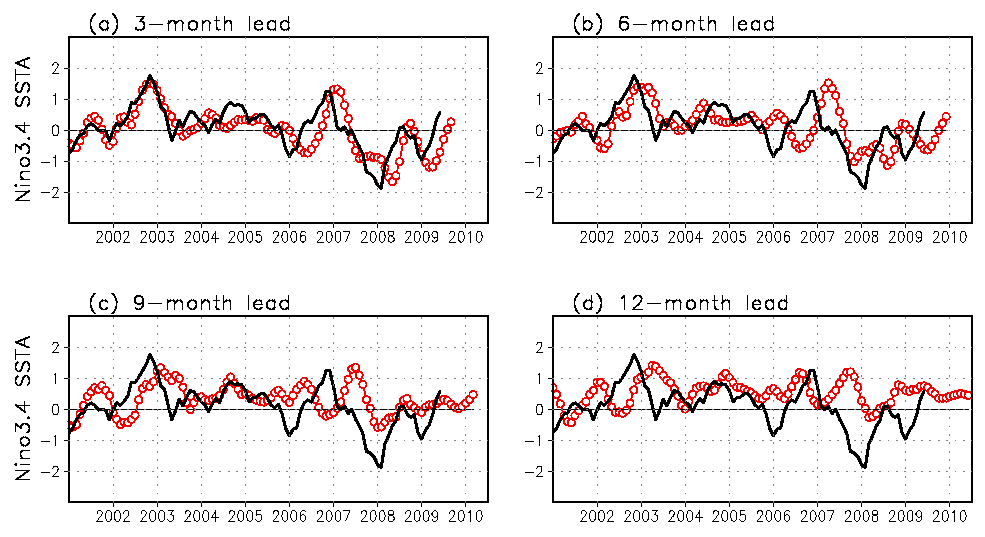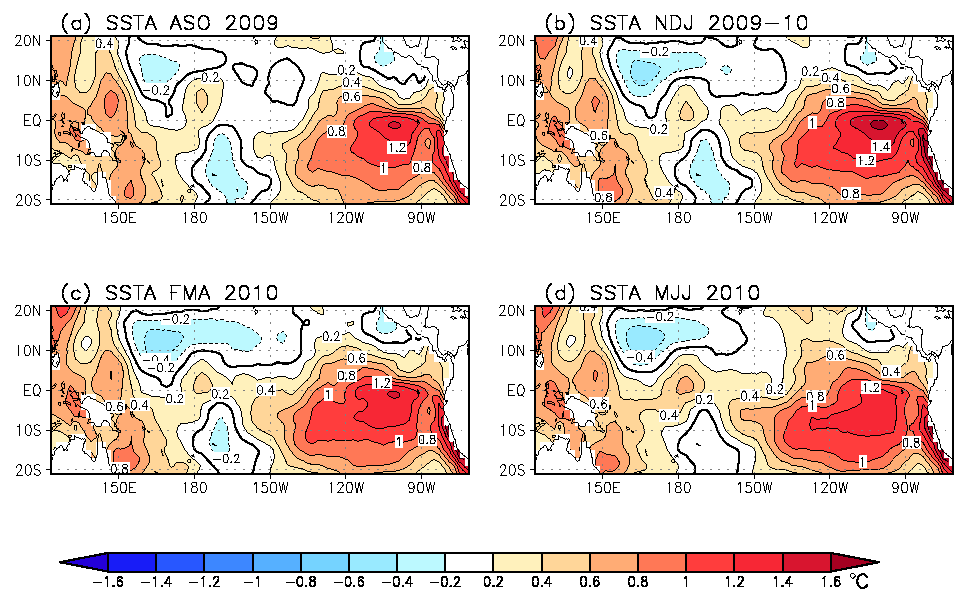Nonlinear canonical correlation analysis
forecasts of the tropical Pacific sea surface temperatures
Aiming Wu and William W. Hsieh
Using sea level pressure and sea surface temperature data up to the end of
June, 2009,
forecasts were made with the
nonlinear canonical correlation analysis model
approach. Ensemble-averaged forecasts for the sea surface temperature
anomalies (SSTA) in the Nino3.4 region
at various lead times are shown in Fig.1, and the forecasted SSTA
fields over the tropical Pacific are displayed in Fig.2,
showing gradual warming of the equatorial Pacific.
Figure 1. The SSTA (in degree Celsius) in the Nino3.4
area (170ºW-120ºW, 5ºS-5ºN) predicted by the ensemble-averaged nonlinear
model at 3, 6, 9 and 12 months of lead time (circles), with
observations denoted by the solid line. Tick marks along the abscissa
indicate the January of the given years.
(The pdf file of Fig.1 is also available).

Figure 2. SSTA (in degrees Celsius) predicted by the ensemble-averaged
nonlinear model at 3, 6, 9 and 12 months of lead time, corresponding to
the four consecutive seasons starting with
ASO (August-October, 2009).
The zero contour is shown as a thick black curve.
(The pdf file of Fig.2 is also available).

Back to [UBC Climate
Prediction Group Home Page]
The UBC Climate Prediction Group is located in the
Department of Earth & Ocean Sciences, University
of British Columbia, 6339 Stores Road, Vancouver, B.C. V6T 1Z4, Canada


